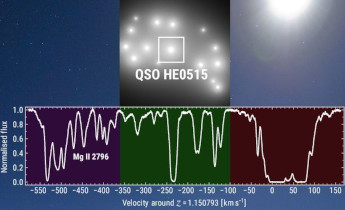
Based on the on the article "Single-lens mass measurement in the high-magnification microlensing event Gaia19bld located in the Galactic disc", by K. A. Rybicki et al.
and "A spectroscopic follow-up of Gaia19bld", by E. Bachelet et al.
Published in Astronomy & Astrophysics, 2022, 657, A17 and A18































































